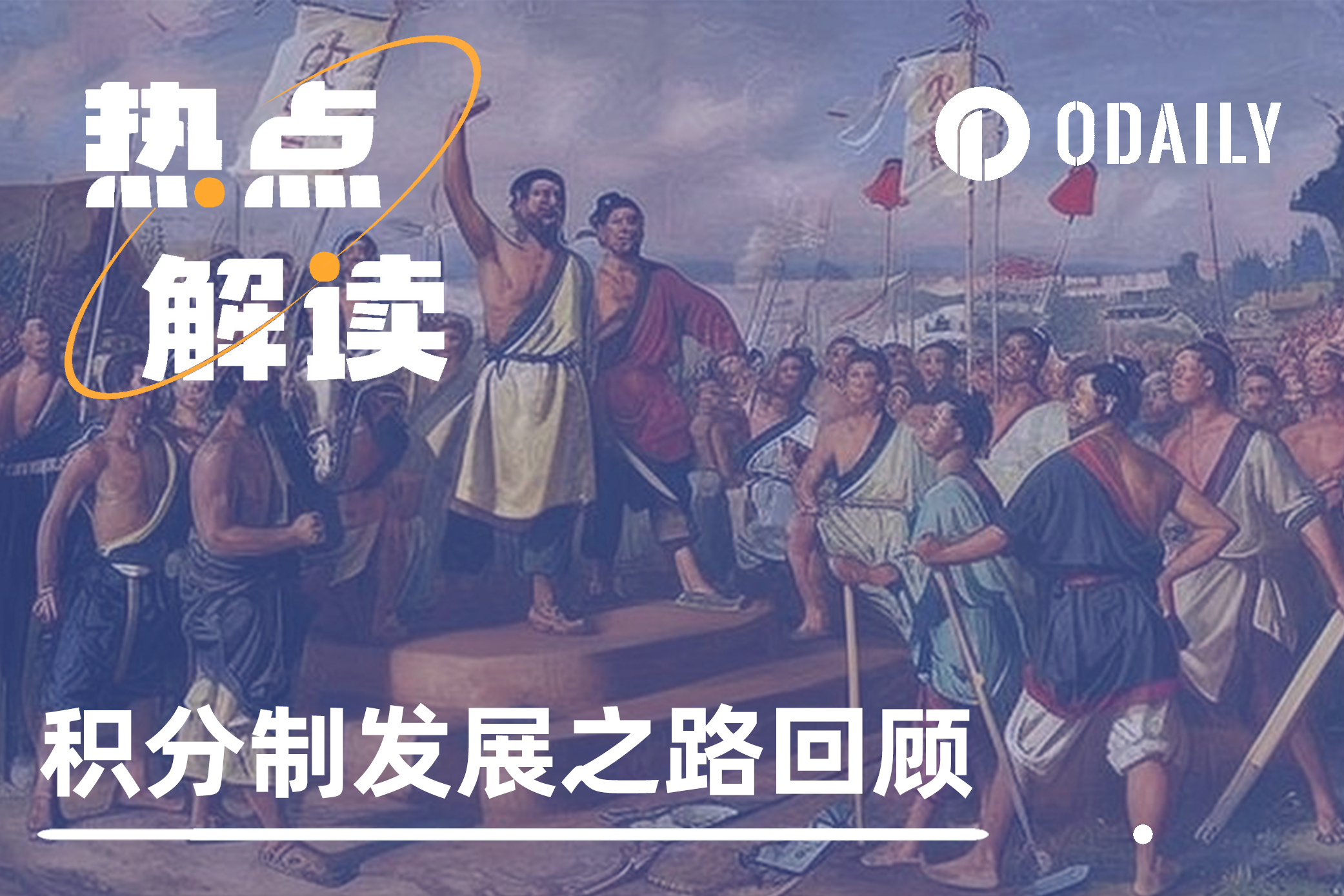The world has suffered from the point system for a long time. This article reviews the rise and fall of the point system
Original | Odaily Planet Daily
Author | Nanzhi

In the early hours of this morning, EigenLayer disclosed the details of the airdrop, which will allocate 5% of EIGEN tokens for the first quarter airdrop plan. The most noteworthy thing is that EIGEN tokens will be non-transferable in the initial stage of claiming. This non-transferable state is expected to last for several months.
On the other hand, EigenLayer announced that the snapshot time is March 15, which means that the points after the snapshot to date are not included in the first season airdrop. Usually, the expected value of the first and second season airdrops is quite different, which led to the decline of YT and PENDLE tokens on Pendle. There were many complaints from users who participated during this period, and the points system was also criticized.
(Odaily Note: Currently, the number of airdrops that Pendle users can check on the official interface is 0. The reason is that EigenLayer needs to connect data with Pendle and other LRTs separately, which will be calculated and announced separately.)
Origin of the points system
In November 2023, Blur launched a new project Blast. Although the points system was not its first, through a series of fission methods and the superposition of market sentiment, Blast officially opened the prelude to the points system craze.
The points system will clearly list the points of each address and provide a ranking list. Usually, the points are only related to the deposited funds, but how the points are related to the token airdrop is still explained by the project party.
Since then, various projects on various chains have begun to launch points systems in large numbers, such as:
Swell , Renzo , Puffer Finance , and Eigenpie from the EigenLayer ecosystem;
DeFi protocols such as Hyperliquid (Arbitrum), Scallop (Sui), Drift (Solana), etc.
Bitcoin ecosystem B² Network, BounceBit, etc.
Other types of projects include wallet Rabby Wallet, on-chain real estate index trading platform Parcl, etc.
Features of the points system
When the points system began to become popular, the points trading market Whales Market also emerged. The platform was officially launched on December 26, 2023. In just one month, the token market value reached nearly 70 million US dollars , and the trading volume exceeded 20 million US dollars as of January 30 .
Why has Whales Market been able to rise so quickly? What needs of users under the points model does it meet? What characteristics of the points system does it embody?
Let us go back to the time before the points system became popular. At that time, the amount of funds was not the main consideration in project interactions and airdrops.
For example, as early as September 2020, Uniswap announced an airdrop, and all users who participated in liquidity provision, conducted transactions, and held or redeemed SOCKS will receive UNI tokens. In the large-scale airdrops in the past one or two years, including Arbitrum and Starknet, although standards such as the amount of interaction have been added, a greater weight has also been given to user "loyalty", including monthly active interactions and the number of interactions.
In the point-based model, the amount of funds becomes the first factor in measuring points, and it is often no longer possible to rely on shop numbers to expand profits. In order for large investors to be willing to invest large amounts of money in a single project, sufficient certainty and security are required. Back to the question of Whales, we can conclude that:
The fully traded points market can serve as an effective reference for prices. Combined with the project's clear points acquisition system, the approximate rate of return can be estimated.
The exchange rules for points and tokens are still determined by the project party, and users can trade in advance to avoid "reverse grabbing". In particular, Whales Market adopts a unified exchange rate exchange rule, which can effectively lock in profits as long as the amount is not too small or other witch reasons are not eliminated.
Points will be continuously diluted as staking activities proceed, and users can sell early to lock in value.
Community Voices
The points system has become a game for big players
Although the point system provides a relatively clear rate of return, users generally believe that the point system makes airdrop interactions a "big player game."
Although various projects are no longer based on the “click and get” airdrop model, for users with smaller amounts of capital, they can make up the difference through long-term interactions to obtain considerable returns and save up their first pot of gold.
At the same time, the airdrop model that is not based on the amount of funds also restricts the entry of large investors, who need to set up studios to effectively exert their financial advantages. However, under the point system, the entry of funds is no longer an obstacle, forming a one-sided crushing.
For example, in the EigenLayer airdrop, Justin Sun airdropped 3,559,570 EIGENs , while the number of airdrops in the first quarter was 83.5 million, and his personal share was as high as 4.26%.
Does the points system lead to toxic TVL?
On the other hand, whether a protocol, ecosystem or even a public chain can attract users should start from the product and achieve the purpose of introducing users by solving user needs and pain points. For example, Arbitrum relies on GMX and still has a large amount of funds and users even after the airdrop. Base relies on products such as ft and degen to introduce a large number of new users.
However, under the point system, although it also attracted capital injection, it was more of a "toxic TVL" that had nothing to do with the quality of the product, but only considered whether it had a sufficient rate of return. What attracted capital was not the improvement or regression of the product, but the change in the point system and profit expectations. The point system did not attract users or builders, but ruthless farmers.
In particular, some ultra-high TVL projects have recently performed far below market expectations after they were officially launched. Blindly pushing up TVL without sufficient group, product and user awareness will eventually backfire.
As mentioned above, the specific exchange rules for points and airdrop tokens are still determined by the project party, and points do not mean a promise of returns. The world has suffered from the point system for a long time, and perhaps the next large-scale point project reversal will be the beginning of the end of the point system era.



